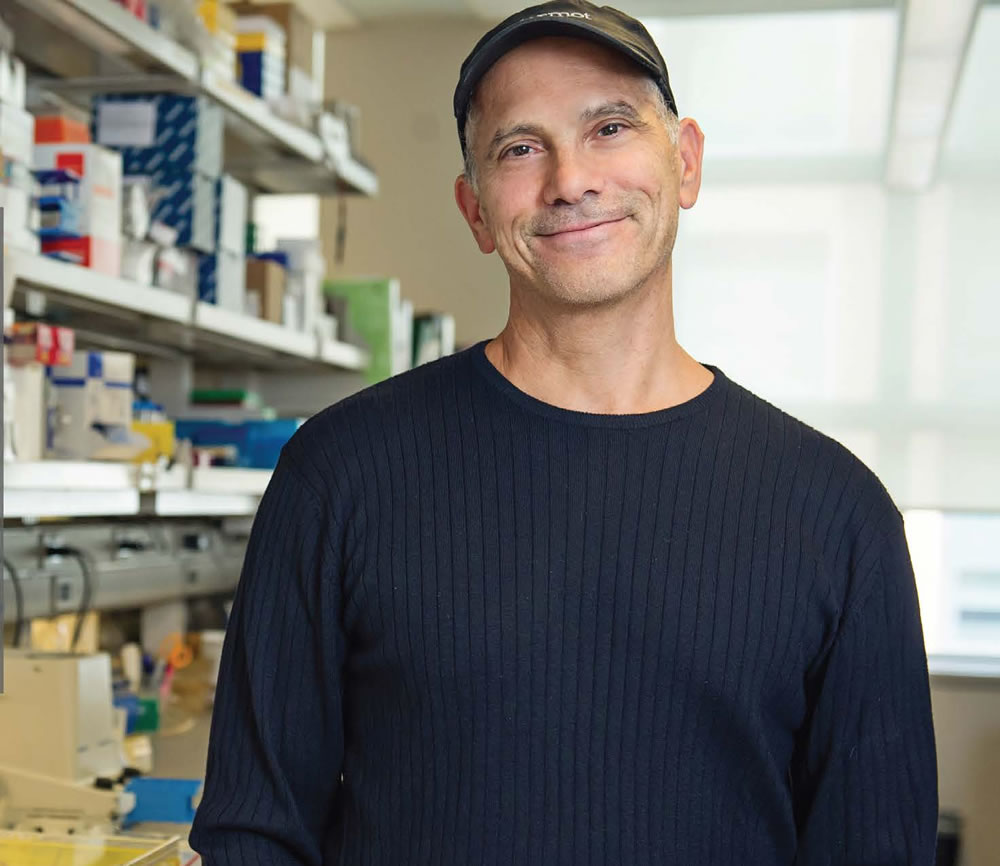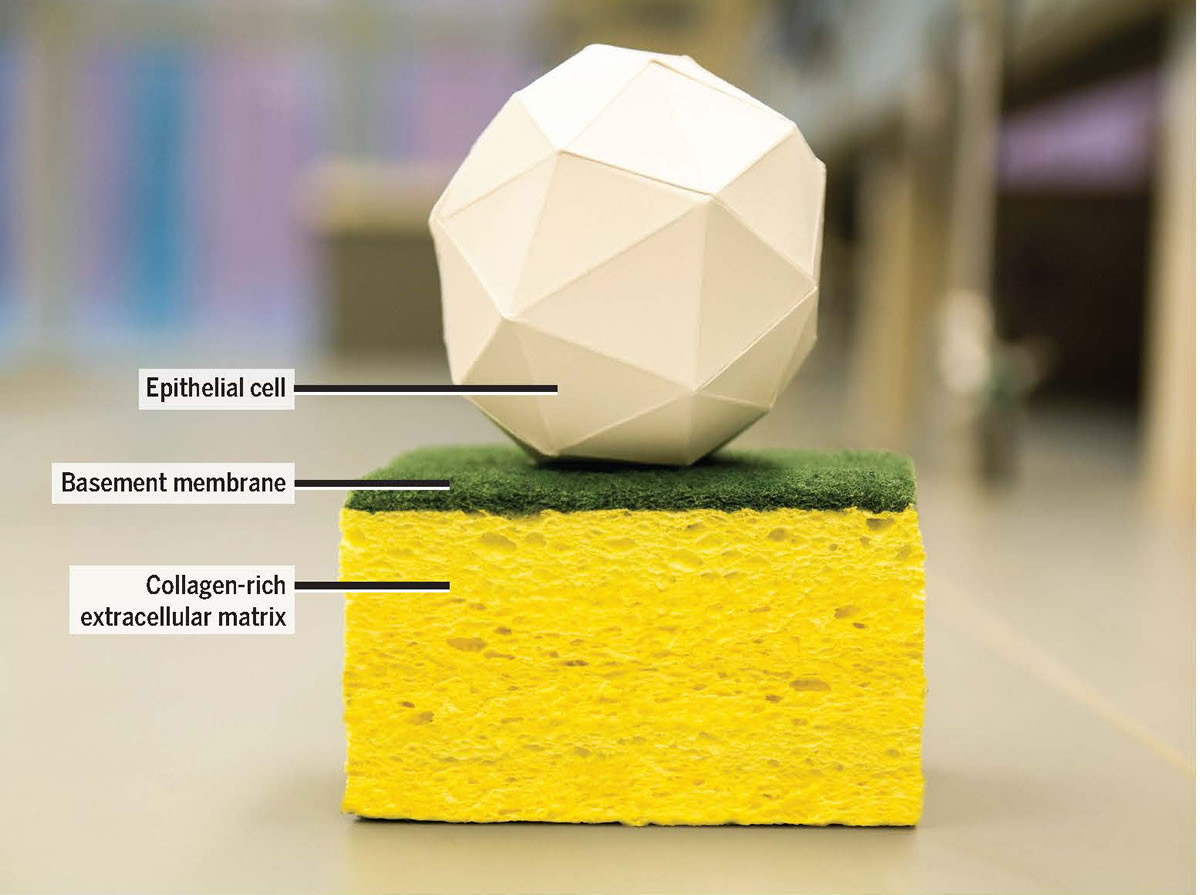How studying normal cells offers insights into how cancer spreads
This is a summary of a longer article published in the University of Michigan’s LSI Magazine.

Stephen J. Weiss, M.D., keeps a desiccated, yellow kitchen sponge in a drawer in his office.
"They're synthetic now, but the sponge that you buy at the store used to be the extracellular matrix of an organism called sponge," says Weiss, associate director for basic science research at the University of Michigan Rogel Cancer Center.
"They're tough -- the reason you could scrub with them is because everything is cross-linked and held together really well."
Weiss' primary focus of research is on metastasis -- cancer's deadly ability to migrate to far-flung and vital parts of the body.
"In my lab, we actually spend about half of our time trying to understand how normal cells invade tissues in order to gain insights into how cancer cells invade," says Weiss, a faculty member at the U-M Life Sciences Institute and the Gifford and Love Barnett Upjohn Professor of Internal Medicine and Oncology at the U-M Medical School.
Healthy cells migrate only under special circumstances, such as in the early development of an embryo or when new skin cells and blood vessels move in to repair a wound. For a cancer cell to gain access to the body’s major highways -- the blood vessels and lymphatic system -- it has to invade through something. And what it invades through is that sponge-like extracellular matrix, which is predominantly made up of collagen.
Traditionally, scientists who want to study cells will culture them in flat, shallow dishes. But this standard, two-dimensional setup is inadequate for studying metastasis.

"Cells don't invade through plastic," Weiss says. "So we knew we were going to have to design a three-dimensional construct that recapitulates, as close as we can, what that environment looks like in vivo."
Weiss’ lab cooked up its own collagen mix for the purpose -- one that ended up more closely mimicking important aspects of natural tissue than commercially available alternatives that other scientists were using. And it was using this 3-D culture method, done in clear plastic cylinders that resemble oversized thimbles, that Weiss’ group made its big finding.
In order to cross through those tough, interconnected fibers of the extracellular matrix, cancer cells employ a pair of molecular "scissors" that are situated on the surface of the cell, Weiss says. These scissors are really enzymes -- known as a matrix metalloproteinase -- that can cut the collagen fibers, allowing the cell to move through. Our bodies make hundreds of similar enzymes, 23 of which are specific to degrading the extracellular matrix.
Weiss and his colleagues found that there’s a single pair of these scissors -- membrane type-1 matrix metalloproteinase, or MT1-MMP -- without which cancer cells cannot snip their way into surrounding tissue.
Even more unexpected was what Weiss and his colleagues discovered in research mice lacking the gene to make MT1-MMP. The missing fat cells were an important clue in understanding how MT1-MMP remodels collagen and how this process might be co-opted by invading cancer cells, Weiss says.

Penetrating the basement membrane
Most cancers originate in epithelial tissue. Epithelial cells grow on top of a thin, specialized layer of protein called the basement membrane. So a cancer cell wanting to cross into the collagen-rich extracellular membrane, and from there invade other parts of the body, first needs to be able to penetrate the basement membrane.
As it turns out, mature fat cells are completely surrounded by a basement membrane, Weiss says.
This is important because fat cells make MT1-MMP, but they don’t invade. They do, however, need to reshape their basement membrane to give themselves room to grow and expand. And they use MT1-MMP to accomplish this.
"So, studying how a normal cell interacts with the basement membrane can tell us lots about how a cancer cell must be interacting with it in order to remodel it during invasion," says Weiss.
Weiss continues to use the 3-D matrix to pursue MT1-MMP as a potential therapeutic target. He also uses the 3-D platform to expand the understanding of how normal cells and cancer cells behave.
"How the cellular machinery goes awry is pretty difficult to pin down when you don’t fully understand the normal workings of a cell," Weiss says. "Slowly but surely, we continue to grow our understanding of the basic machinery of the cell."
Read the article in its entirety by opening the pdf: Fighting Cancer in 3-D.
